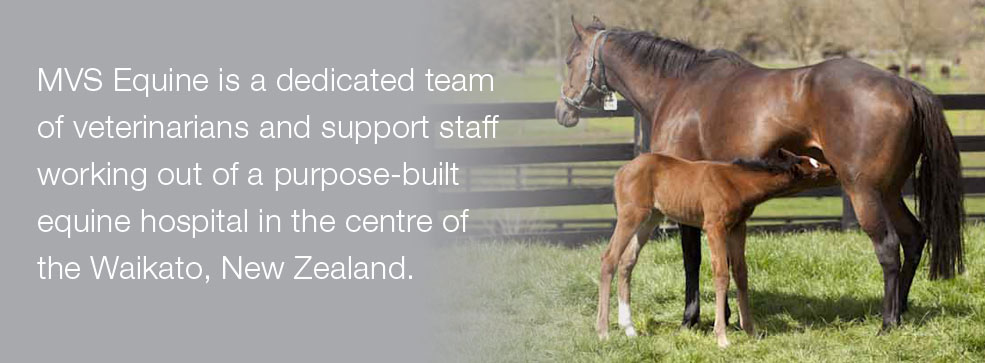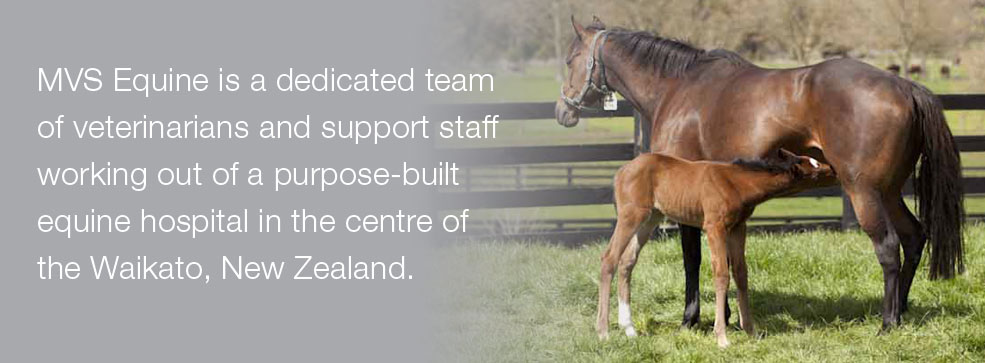Lameness
Lameness
May 28, 2012
Our relationship to the horse is most often linked to its athletic ability. A lameness problem resulting in the horse (and rider) having a period of rest therefore constitutes a huge source of financial, athletic and at times emotional loss in the equine industry. Lame horses justify a thorough investigation so that the horse can be returned to athletic performance as early as possible and with the risk of re-injury reduced. This requires an accurate diagnosis. In some cases this may be simple; in others, an extensive investigation including nerve blocks and diagnostic imaging may be required.
Injuries causing lameness are best divided into acute injuries and overuse injuries. There is a tendency with horses to blame everything as an acute traumatic type injury because we often don’t see what our horses get up to in the paddock or the stall. While these injuries are still common, modern science has allowed us to classify and understand much more about the types of overuse injuries that horses also get like stress fractures, caudal foot pain and tendon injuries. Overuse injuries present a real challenge because they are harder to diagnose and treat, and we need to understand why it occurred so we can rehabilitate the horse properly and prevent the injury from happening again.
Lameness is any abnormality of the horse’s gait or stance. We grade lameness on a scale of 1 to 5; 1 being only slightly lame and a 5 being a horse that is not able to bear weight hardly at all. Lameness may be caused by pain, a mechanical problem, or a neurological condition. Most of the time, lameness results from pain in the musculoskeletal system (muscles, tendons, ligaments, bones, or joints) leading to abnormal movement at the walk, trot, or canter.
Examining a horse for lameness requires patience. The horse can’t tell us where it hurts so we need a methodical approach to reach the correct diagnosis. Horses with chronic lameness may develop compensatory gait abnormalities to deal with the primary problem, and some horse may have more than one area causing a problem. Typically the first question I ask is “what does your horse do?” This often gives an insight to the types of injuries that are common for that particular discipline, as well as the expectations of the rider.
Sometimes it is obvious why a horse is lame. There is a large wound or obvious swelling that we can identify immediately. This may still need other diagnostic tests like x-rays or ultrasound so that we can make sure we give the best advice on treatment options and the appropriate period of rest or rehabilitation, or to monitor healing. Other times it is not obvious and a full lameness examination is necessary. This can require evaluating the horse being walked (to assess limb flight, conformation, and movement through the back) trotted, lunged and sometimes ridden on both hard and soft ground. Flexion tests are a standard stress test of the limb. This allows vets to compare results with other vets (which is especially important for pre-purchase examinations). Flexion tests involve flexing the limb for 30 seconds to 2 minutes. Then the horse is trotted away for 20 to 30 metres. If a particular flexion test worsens the lameness then that is an indication that there is a problem in that area.
Local anaesthetic nerve blocks are another way we get the horse to tell us where it hurts. By numbing out areas of the limb and working our way up we can tell that when the horse no longer trots lame we must have localised the site of pain. Nerve blocks are probably under-utilised in equine practice but they offer a relatively inexpensive way of defining and localising lameness relatively simply and with usually minimal risk. This technique can be performed with joints and tendon sheaths as well, although these require more care as it is essential that they are performed in a sterile manner to avoid infection being introduced into the joint.
Once we have localised the area causing the lameness we need to use diagnostic imaging to investigate the structures in that region in more detail. Radiography (X-ray) still forms the corner stone of equine diagnostics and with the advent of Digital Radiography even more so today. Sometimes we will circumvent the use of nerve blocks and go direct to digital x-ray because it is so convenient. Radiographs are very specific in that what you see is definitely real, but we must be careful not to over interpret our radiograph findings; “A horse doesn’t run on its x-rays”. Therefore sometimes we still go back to nerve blocks to reconfirm the significance of certain findings if necessary. Radiographs are excellent for assessing bones and joint surfaces, especially in respect to osteo-arthritis which is the most common cause of overuse injury type lameness that we see as equine vets.
Ultrasound is the best diagnostic method for looking at tendons, ligaments, and other soft tissues. Quality ultrasound machines are also much more affordable now with the advances in computer processing technology and we can accurately scan areas such as the stifle, pelvis, back and even neck joints.
Scintigraphy (bone scan) is performed on horses when the lameness is subtle or intermittent, we suspect a multi-factorial lameness, or we suspect it is in the back or pelvis. Scintigraphy is also our first choice if we suspect a stress fracture which is most common in racehorses. Bone scans measure the activity of the skeleton. If a horse has an injury then new cells arrive to heal and replace the damaged bone. This means it will absorb more of the radioactive labelled material we inject into the horse and this in turn will show up as a ‘hot spot’ on the scan. Bone scanning is said to have high sensitivity (it’s very good at detecting abnormal bone activity) but low specificity (it cannot deduce what has caused the high turnover). That is why if your horse has had a bone scan we still often need to use other techniques to identify the cause of the hotspot like radiography or ultrasonography.
In order to properly investigate the cause of lameness your veterinarian must have a thorough knowledge and understanding of the mechanisms and anatomical structures behind your horse’s movement. Equine referral centres have experienced veterinarians with training in the most advanced and sophisticated diagnostic tools and treatment options to get your athlete back competing sooner. What is the real cost of a lame horse?




